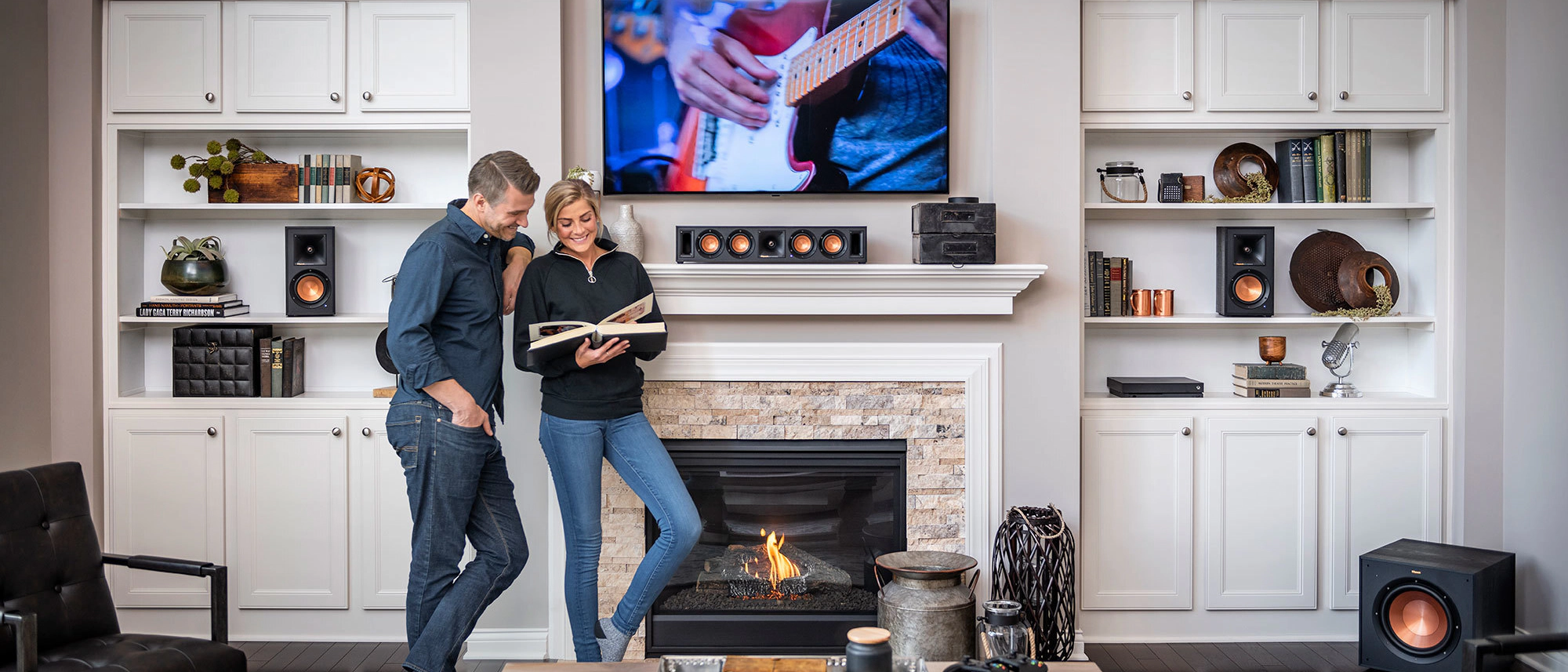
How to Set Up the Best Home Theater System
Do you ever feel dissatisfied with your TV's built-in speakers? That's totally understandable. There's a quantum leap in quality between TV speakers and a home theater system.
Once you've heard real surround sound, you won't want to go back. With speakers carefully arranged around the room, you can enjoy a fully immersive experience in 5.1, 7.1, or Dolby Atmos. You'll feel just like Dorothy going from Kansas to Oz.
In this walkthrough, we've explained how to set up the best home theater system piece by piece, from the receiver to the speakers. We'll also break down how the core components work together to create the full surround sound experience.
LEARN ABOUT THE BEST SPEAKERS FOR HOME THEATER>
Designing a Home Theater
Before shopping for a home theater system, take a moment to consider your living room layout. When designing your home theater, every speaker needs to be optimally placed for the physical space. For instance, the center channel should be facing viewers in line with your TV screen, and floorstanding speakers should be placed at an equal distance from the TV.
Likewise, you should consider how the speaker wire will connect your entire system, while still being hidden from view. The best way to run wire is inside the wall, but that can be a messy process, so you might prefer using cable covers that match your wallpaper.
To complete the home theater setup, you'll need at least two surround sound speakers and a subwoofer. When combined with the center channel and floorstanding/bookshelf speakers, you have a 5.1 system. The "5.1" is shorthand for five speakers and a subwoofer. Likewise, a 7.1 system adds two surround speakers for a more immersive experience. The latest home theater technology is Dolby Atmos, which relies on speakers that can fire upwards or downwards to create a truly three-dimensional sound. It can make a sound effect feel like it's coming from a specific place in the room, rather than just emanating from one of the speakers.

Components of a Home Theater System
- Home Theater Receiver: This is the heart of your home theater. It connects all of your speakers, processes audio from your TV/media player, and amplifies it for playback. When shopping for the best home theater receiver, choose one that has enough channels for your speaker configuration, enough power to amplify your loudspeakers, and the features you want to use (like Bluetooth).
- Speakers for Home Theater: Depending on your setup (5.1 is the most common), you'll need at least 5 speakers and a subwoofer. These include a center channel, left and right speakers, and two or more surround speakers. With a 7.1 system, you'll need to add two rear surround speakers. Meanwhile, Dolby Atmos systems can come in a variety of configurations, with at least one subwoofer, a center channel, two floorstanding/bookshelf speakers, and two surround speakers.
- Home Theater Amplifier: Most home theater setups rely on the receiver for power, but a home theater amplifier is useful for delivering extra wattage to your large speakers.
- Cables/Wire: These deliver audio and power to your speakers. Quality wire is essential for quality sound. We recommend using high-purity 16 or 14 gauge wire that's CL3 rated.
- Surge Protector: After investing hundreds of dollars into a home theater system, this one should be a no-brainer. A surge protector guards your electronics against voltage spikes, which can happen without warning on a power grid and fry your gear.
Looking for the Cheapest Surround Sound System?
In the home theater world, cheap doesn't equal good. Typically, you get what you pay for. Lower-quality gear won't offer the nuance that you expect from an audiophile system, so you might hear the speaker housing rattle, or the receiver may underwhelm. It's possible to find an incredible system for less than $1000, but you need to pay attention to the most important factors.
First, home theater speakers should be designed with high-efficiency drivers, so you can hear the loudest and softest moments accurately. They should also have a flat frequency response that presents audio content as it was meant to be heard. When played at louder volumes, the speakers and receiver need to preserve clarity without introducing distortion. And finally, the speakers should offer controlled directivity, so that sound is positioned in an optimal direction. That's what a Klipsch home theater is designed to do.
